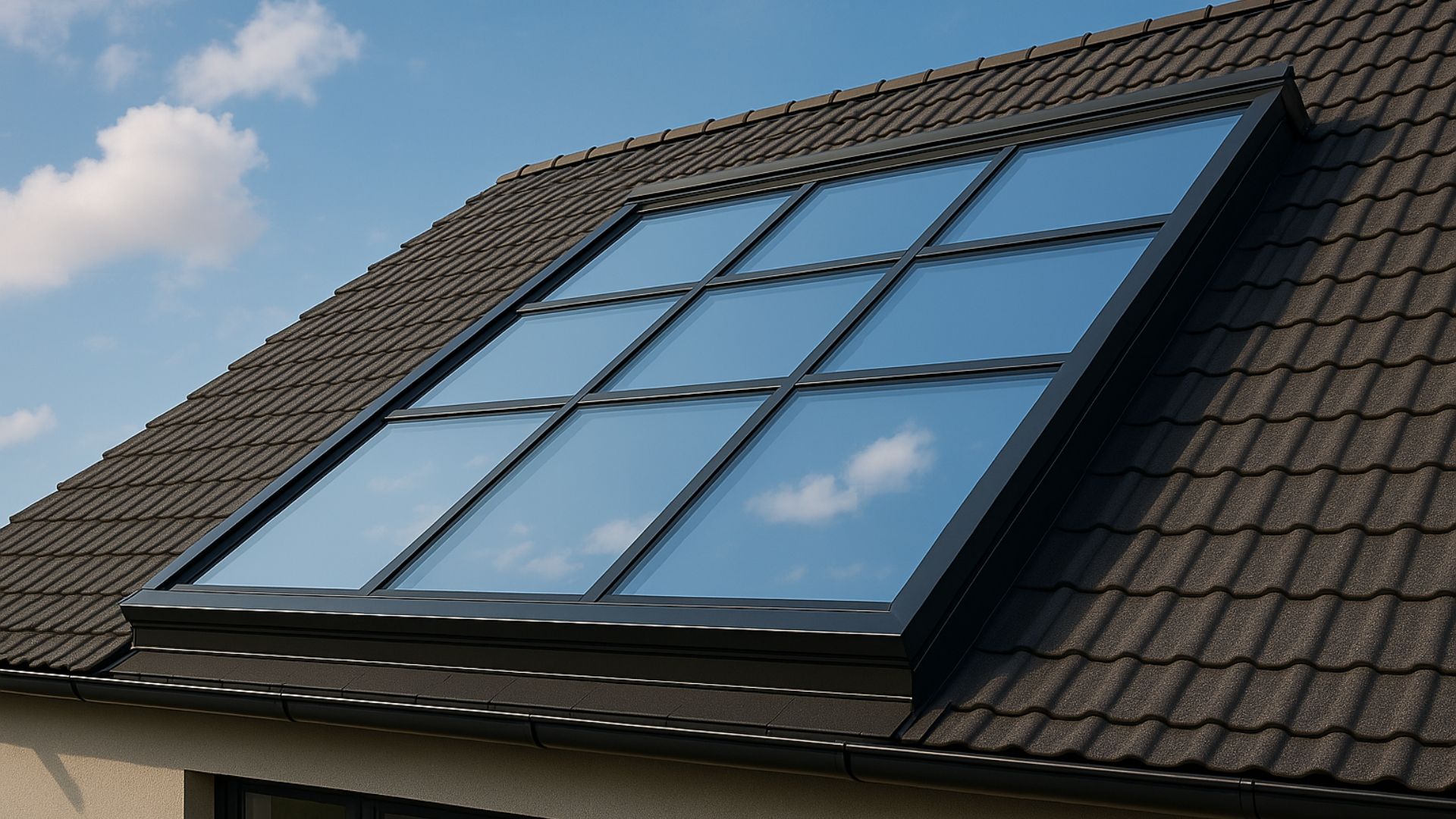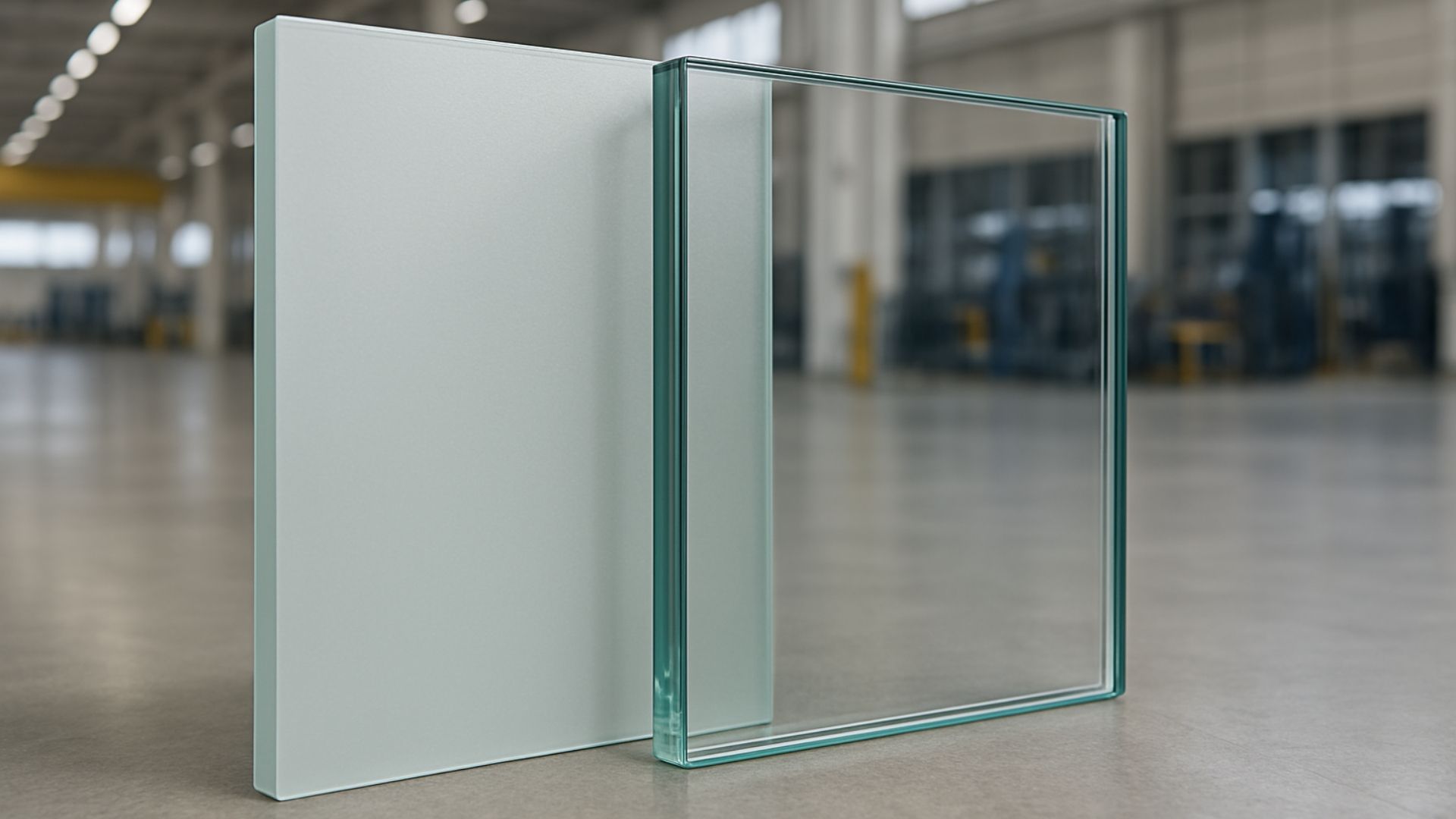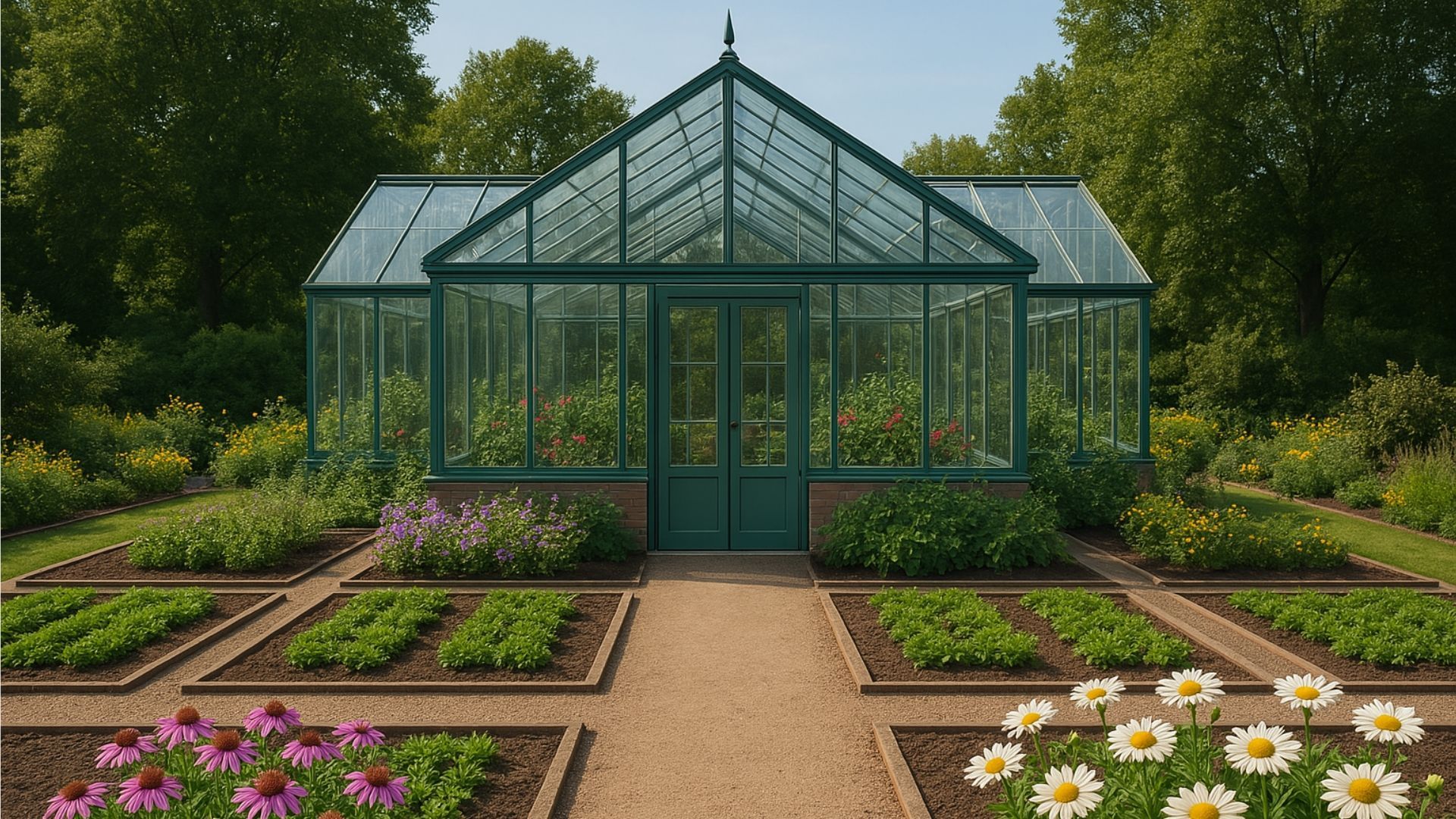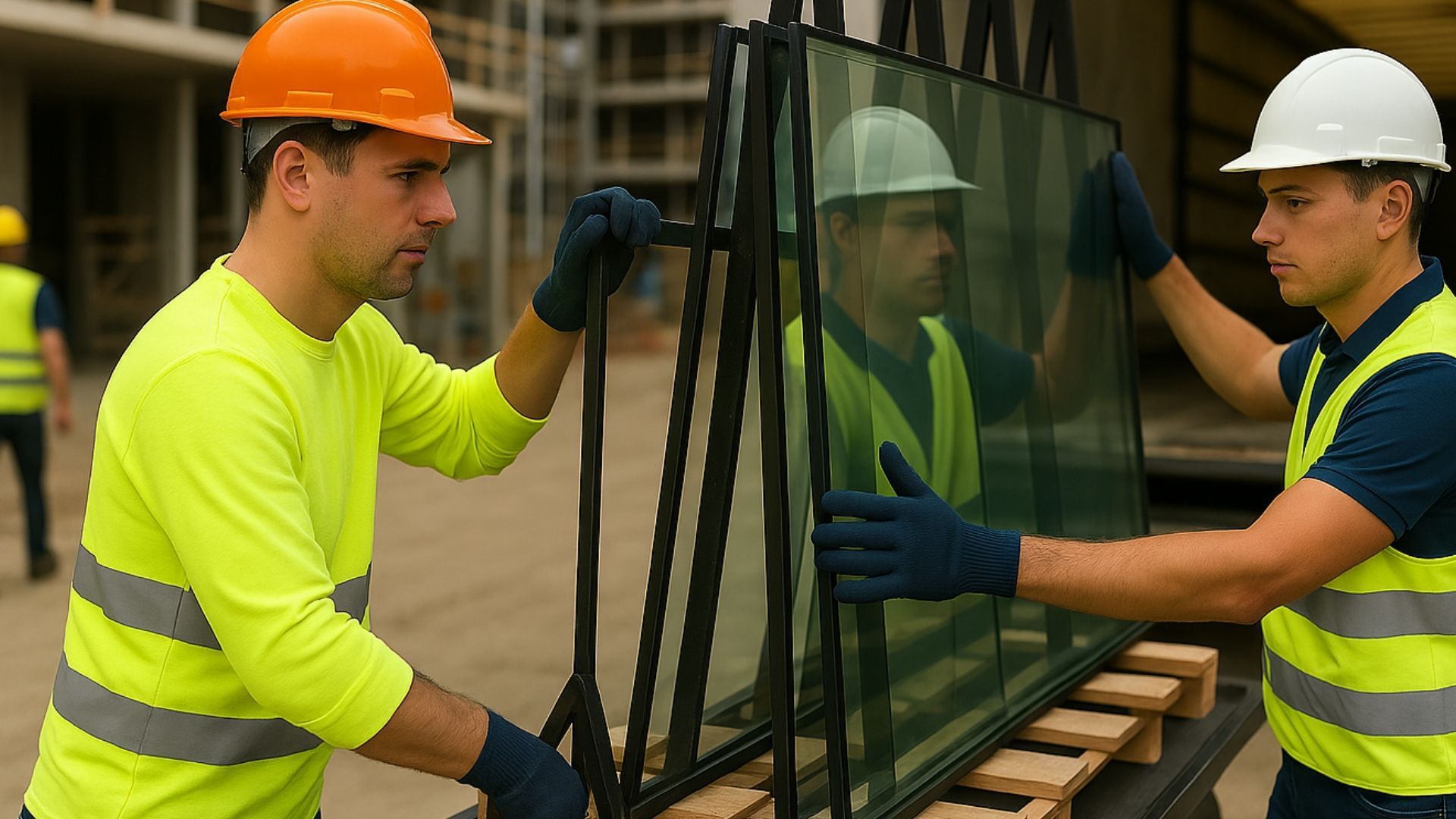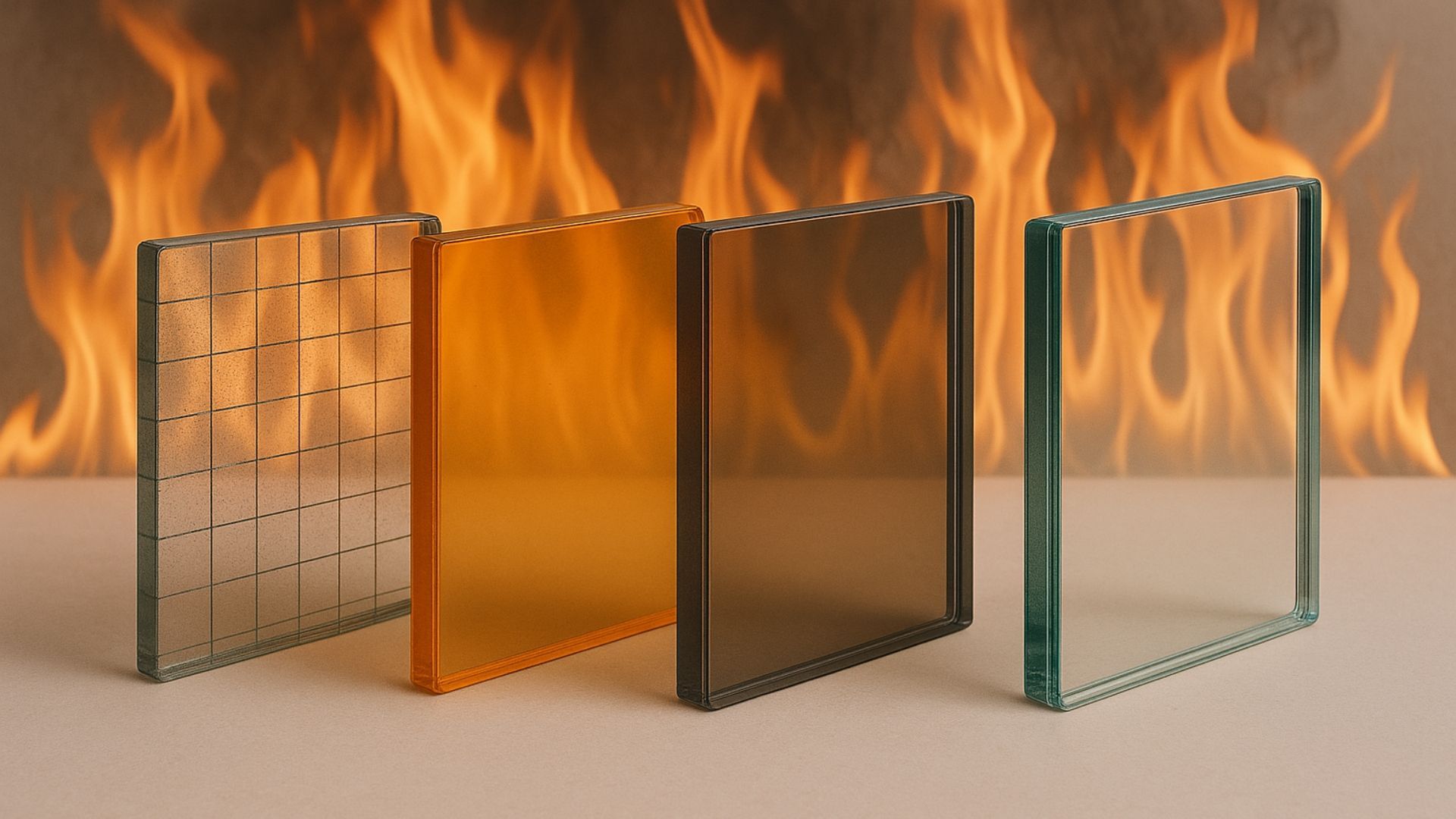5 developing technologies that could define the future of glass
Share this blog:
The glass industry is developing all the time. Learn about 5 amazing technologies that could shape its future.

The earliest examples of glass date from the third millennium BC. Over the millennia, one thing has stayed the same: glass is made from sand exposed to a high temperature. But the specifics of manufacturing have come on in leaps and bounds.
In the first century BC, glass blowing was discovered – a method used to this day. Since then, manufacturers have started using industrial furnaces, conveyor belts and CNC machines, all the way to today's use of AI in the manufacturing process.
It's not just the methods that have changed. Innovations like
toughened glass,
laminated glass and
fire-resistant glass were all unknown before the 20th century.
But the glass industry isn't resting on its laurels. Developers, inventors and manufacturers are still exploring the possibilities of new products – products that could define the future of glass. In this article, we look at five of the most exciting.
1. Flexible glass
The idea of flexible glass has been knocking about since at least the reign of Tiberius Caesar in the first century AD. But historians argue that those early references have a strong whiff of make-believe about them.
Yet today, flexible glass exists, if only as a specialist product. In 2012, Corning unveiled Willow: a type of bendable glass that can be laser-cut in huge sheets.
Then, in 2019, a team at the University of Lyon discovered a type of aluminium-based glass that can be stretched at room temperature without breaking.

Most glass is made from silica. Its chemical composition means it's impossible to bend without breaking. But this aluminium-based glass behaves like a metal.
What could it be used for? Some speculate that it could be used to make flexible electronic devices – a bracelet smartphone, say, or a tablet that folds like a paper book.
This dream is still a long way off, not least because we don't yet have computer chips or batteries that can bend. But who knows? Maybe one day flexible glass will be all around us.
2. Transparent solar panels
Could glass generate electricity? Could your windows power your homes and your devices? The answer is a resounding "yes".
Swiss scientists have developed so-called "Grätzel cells" – dye-sensitised solar cells (DSCs) that convert visible light into energy.
They're transparent, they're cheap and they can be produced in a wide range of colours. While they're yet to be a household name, some forward-thinking households have already installed them in skylights, glass facades and greenhouses.
One of the most striking uses of DSCs, however, isn't in a domestic setting but at the Copenhagen International School. One of its buildings is covered in around 12,000 blue DSCs.
If scaled effectively, these could be a fantastic addition to the solar panel revolution. Unlike current solar panels, they blend into the surroundings seamlessly.
And who knows where these could take us. A skyscraper fitted with DSCs and functioning as a vertical solar farm? Watch this space…

3. Lightweight glass
Many people have observed that technology in the 21st century has involved a lot of slimming. This includes glass, which can now be thinner and more lightweight than ever.
This isn't just an aesthetic choice to make Apple products look sleek. It's also a way of reducing carbon emissions in glass production.
On average, glass today is 30% lighter and 70% less energy-intensive than 50 years ago – and it's only getting thinner.
Ultra-thin and lightweight glass can be used in all sorts of applications – from optical lenses to phone screens to glass bottles.
This is partly possible thanks to new materials. Glass made from titanium and zirconium is now being used in some of these applications. Industry analysts suggest that it will soon be used in windows and doors, too.
5. Self-healing glass
Perhaps surprisingly, self-healing materials are nothing new. The ancient Romans, for instance, used a kind of concrete made out of lime mortar. Any cracks would self-repair.
Glass, though, is another matter. Surely common sense dictates that a crack in a piece of glass can't heal itself?
In fact, a team of Israeli and North American scientists discovered a self-assembling, self-healing glass by mixing a particular peptide (a chain of amino acids) with water.
The resulting material is extremely strong and as clear as ordinary glass. The researchers found it can be used to make glass panes and coatings – and could potentially be used to make optical lenses.
Self-healing glass shouldn't be confused with self-cleaning glass.
There are two types of self-cleaning glass currently on the market: hydrophobic and hydrophilic glass. Both clean themselves using water droplets.
There's also "antimicrobial glass". This contains silver ions that destroy 99.9% of bacteria on the surface.
6. Smart glass
Finally, there's smart glass: a type of glass that can be switched from transparent to opaque with the touch of a button.
Smart glass is already used in all sorts of ways – from car sunroofs to office partitions and from shower doors in domestic bathrooms to privacy screens in clinics and hospitals. It can also be used as a projector screen in offices or retail environments.
It works in different ways, but most forms of smart glass contain tiny elements that get rearranged by an electric current. When the current's off, these minuscule elements – whether polymer-dispersed liquid crystals, metal blinds, rod-like particles or lithium ions – block out the light. When the current is on, they're scattered, letting light pass through.
Smart glass is energy-efficient and versatile, allowing for privacy on demand. We've no doubt that it will become a fixture for architects and designers in the coming years.
At ToughGlaze, we have our own type of smart glass,
TG SWITCH. It's an example of how committed we are to staying ahead of the curve with high-quality products that can be cut to meet your requirements.
Interested in exploring the potential of
smart switch glass? Don't hesitate to
get in touch for a quick, competitive quote.


